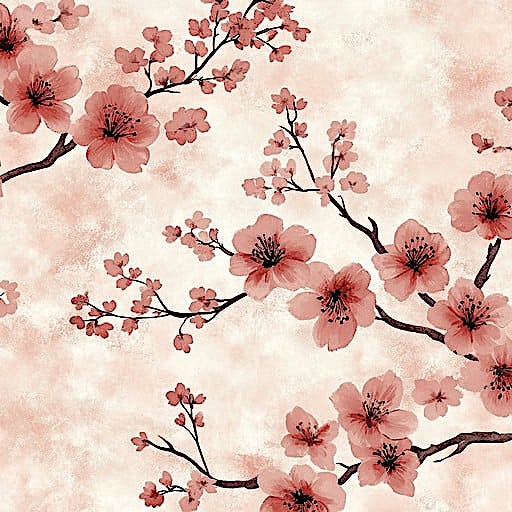By the time the cherry blossoms reach Hokkaido, everyone else has moved on. Tokyo has packed away its blue tarps, Kyoto’s riverbanks have returned to normal, and Instagram is already bored. But not Hiroshi. He has come north, alone, slightly damp, and spiritually misaligned.
Hiroshi is what might generously be described as “between careers.” After quitting his Tokyo office job in an act of quiet rebellion (his exact words: “I’m allergic to PowerPoint”), he decided to chase a more meaningful existence, ideally one with fewer spreadsheets and more moss. He read somewhere that the sakura in Hokkaido bloom weeks after the rest of Japan, and it struck him like a haiku. The final bloom… the season’s lingering thought. A perfect metaphor for late-bloomers. For people like him.
He wasn’t the only one with this idea. There was Mika, a seasonal botanist who didn’t believe in metaphors. She came with waterproof boots, a collapsible ladder, and a weather-tracking app named Yoshi she talked to more kindly than humans. Then there was Yuto, a freelance videographer and part-time barista who kept muttering about algorithms and how “melancholy performs well post-Golden Week.” And finally, Daiki, a retired civil servant turned amateur drone poet. His drone had cherry blossom decals.
Together, they waited in Hakodate Park like weird disciples of a tree that hadn’t yet decided if it was spring.
“It’s about patience,” Hiroshi offered on day three, to no one in particular.
“It’s about soil temperature,” Mika corrected, scrolling.
But Hiroshi believed this delay had meaning. He began to see the tree not just as a tree, but as a kind of kura – a storehouse of time, withholding its bloom like it was preserving something sacred. In Edo times, people built kura to hold rice or valuables. Why not memories? Why not a few pink petals suspended between then and now?
On day five, the tree bloomed. Sort of. Three petals on the southernmost branch. Yuto got a close-up. Mika wrote “meh” in her journal. Daiki’s drone flew into a crow and had to be respectfully retrieved.
Hiroshi, however, just stared. Not at the blossoms, but at what hadn’t bloomed. What he had expected to feel. What he hadn’t. Maybe that was it—the real pilgrimage wasn’t toward beauty, but toward disappointment with grace. The ability to sit in the last seat at the concert and still clap like it’s the encore.
He took a deep breath. It smelled like wet bark and unresolved expectations.
And in that moment, he decided: the blossoms weren’t just symbols of fleeting time—they were offerings. Memories stored gently in nature’s kura. Tiny pink receipts for time well spent.
Author’s Note:
Every year, the cherry blossoms remind us that endings can be soft. That not everything meaningful is first, loud, or viral. The final bloom in Hokkaido may not be in the photos, but someone always notices. And sometimes that someone is a failed salaryman with theories, a linguist with boots, or a blogger with an aggressive drone. Wherever the gods rest, or bloom, we’re just lucky to witness it.
Hiroshi stayed in Hakodate three days longer than planned. He helped Daiki repaint his drone (“a more humble gray”). Mika went back to the city with dry boots and a mildly thawed heart. Yuto posted his footage with the title “The Last Bloom?” and gained twelve new followers, none of whom knew what he meant. And Hiroshi? He didn’t find what he was looking for. But for once, that felt like enough.


Leave a Reply